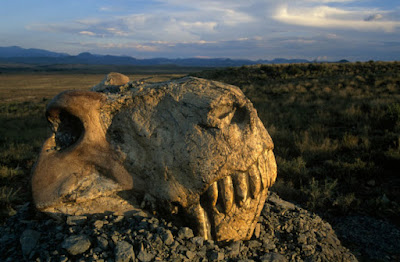David Suzuki writes that episodes of mass extinction are nothing new:
The fossil record indicates five mass extinction episodes have occurred, defined by disappearance of more than 75 per cent of all species within 2.8 million years, a mere blink in evolutionary time. In the five great extinctions, 75 to 90 per cent of terrestrial and marine plants and animals vanished.
Despite these enormous disruptions, life recovered in diversity and abundance, although radically different in makeup. In the Cretaceous-Paleogene mass extinction 66 million years ago, when dinosaurs disappeared after ruling the planet for 180 million years, mammals took advantage and thrived.
On average, an invertebrate species’ lifespan is about 11 million years, and a mammalian species lasts between one and two million years. After a mass extinction, ecosystems recover after two million years, while the biosphere takes about 10 million years to fully flourish again. These numbers and time frames are inferred from the fossil record and geology, and can provide a framework within which to assess the current epoch, often called the Anthropocene.
We are facing our sixth mass extinction. But, this time, things are different:
The explosive growth of human numbers, technological innovation and demands of the global economy have amplified our species’ ecological footprint so greatly that we have triggered another mass extinction episode. Unlike the previous five, this sixth extinction is the direct consequence of one species, us — an infant species that has only been around for 300,000 years.
Although I have faith that nature will continue on despite all we’ve done, whether or not we’re around for it, it will take millions of years for the biosphere to equilibrate again with another array of unimaginable and wondrous biodiversity.
It’s as if we’ve sped up time. Many plant and animal species we care about were destined to be here for a few million years at most, but now they’re disappearing at unimaginable rates, often within our lifetimes. We’re the first species to have caused rapid extinction and to be aware of what we’re doing. We have spread across the planet and become a geological force, reshaping the land and water according to our demands.
But as the top planetary predator, we’re one of the species most vulnerable to extinction — of other species and our own. If the plants and animals we rely on for food and more become extinct, we’re in trouble.
We have the intelligence to recognize the crisis and resolve it by pulling back, ceasing activities that contribute to extinctions, and encouraging nature. Nature always bats last, and wins. That’s because it sets the rules. And nature has an ace up its sleeve: time, all the time in the world until the sun burns out and is no more.
We have the tools to stop what's happening. But we don't have the will to do it.
Image: Discover Magazine

4 comments:
As George Carlin once said in one of his caustic monologues, Owen, we're going away but the earth will ultimately be fine. https://www.youtube.com/watch?v=suIePaXzuIQ&t=64s
I googled Carlin Saving the Planet, Lorne. "Arrogant meddling," he called it. "We're all so self-important."
Peter Ward, an anthropologist at U. Washington, logs six mass extinctions. One was the asteroid that took out the dinosaurs. The other five were what he called "greenhouse extinctions."
"First, the world warms over short intervals of time because of a sudden increase of carbon dioxide and methane... The warmer world affects the ocean circulation systems and disrupts the position of the conveyor currents. Bottom waters begin to have warm, low-oxygen water dumped into them. Warming continues, and the decrease of equator-to-pole temperature differences reduces ocean winds and surface currents to a near standstill. Mixing of oxygenated surface waters with the deeper, and volumetrically increasing, low-oxygen bottom waters decreases, causing ever-shallower water to change from oxygenated to anoxic. Finally, the bottom water is at depths were light can penetrate, the combination of low oxygen and light allows green sulfur bacteria to expand in numbers and fill the low-oxygen shallows. They live amid other bacteria that produce toxic amounts of hydrogen sulfide, and the flux of this gas into the atmosphere is as much as 2,000 times what it is today. The gas rises into the high atmosphere, where it breaks down the ozone layer, and the subsequent increase in ultraviolet radiation from the sun kills much of the photosynthetic green plant phytoplankton. On its way up into the sky, the hydrogen sulfide also kills some plant and animal life, and the combination of high heat and hydrogen sulfide creates a mass extinction on land. These are the greenhouse extinctions."
It amazes me that Ward is able to summarize a greenhouse extinction event in just one paragraph. It's a fairly simple process that leaves a solid geological footprint. BTW,his treatment of the post-extinction recovery epoch is not nearly so simple. Complex lifeforms, i.e. most mammals, are wiped out but the simplest organisms and creatures often survive. Then the process of evolution begins anew and, eventually, a winner emerges - but it won't be human. And that's okay.
We know what will happen, Mound. It has happened before. But we can't seem to break the cycle.
Plus ca change, plus c'est la meme chose.
Post a Comment